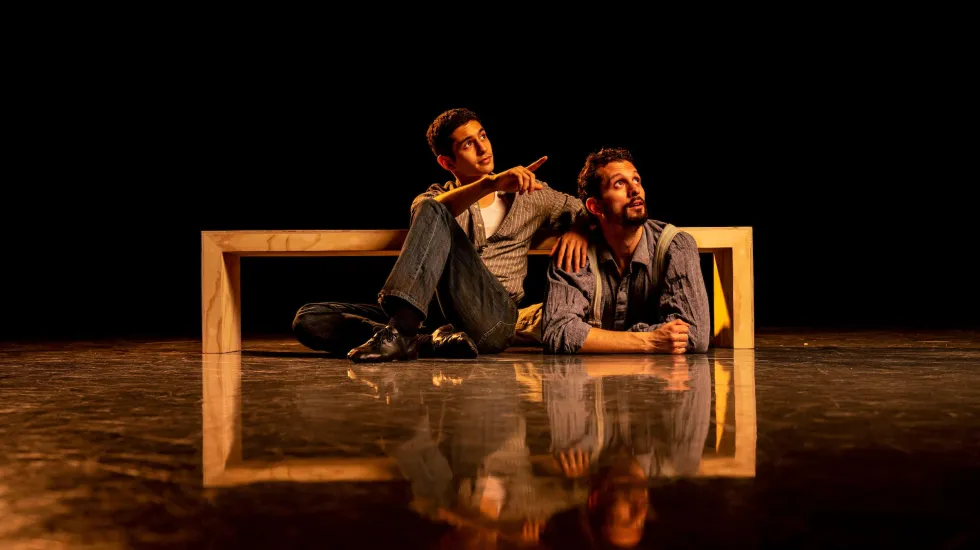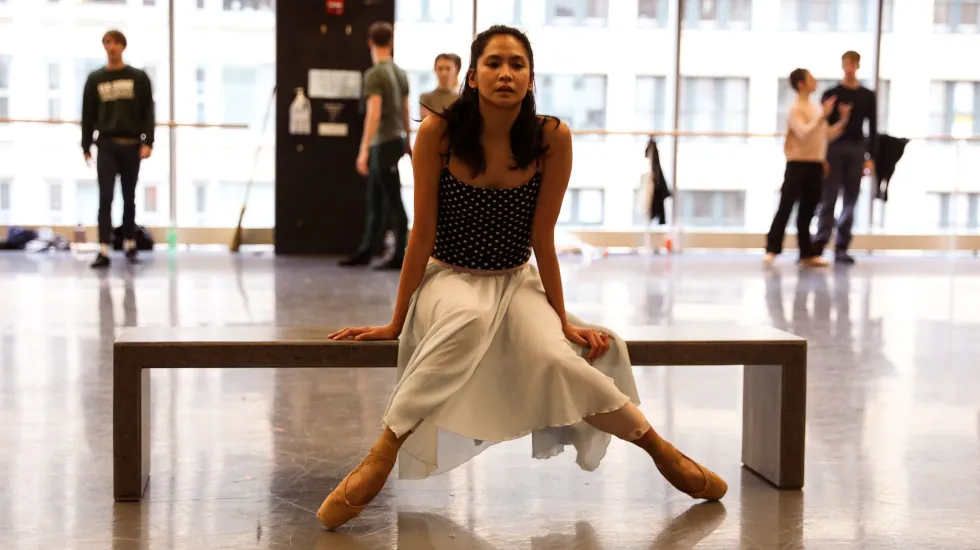
London-based choreographer Cathy Marston can’t read “Of Mice and Men” without weeping. And without the Joffrey Ballet, she couldn’t create the world premiere ballet of John Steinbeck’s shattering chronicle of Depression-era life.
“I was only 16 or 17 when I read it in secondary school, high school in the UK,” she said on a break during April’s first week of in-person rehearsals. “It’s heart-breaking and heart-warming, all at the same time. I’ve always wanted to do it. But you need just the right company to take it on,” she said.
More than two years in the making, the production opens April 27 in a shared bill with the Joffrey premiere of “Serenade,” George Balanchine’s first ballet created in the U.S. almost 90 years ago.
The Joffrey Ballet; ‘Of Mice and Men’
and ‘Serenade’
When: April 27-May 8
Where: Lyric Opera of Chicago, 20 N. Wacker Dr.
Tickets: $35 - $199
Info: joffrey.org
“Of Mice and Men” follows Lennie (danced by Dylan Gutierrez) and George (dance by Xavier Núñez), best friends tramping the country in the early 1930s, when dust storms and drought intersected with a cataclysmic collapse of the economy and threw millions of people out of work. The Great Depression-era plot begins as the friends, ever in a race to stay a meal or two ahead of starvation, find jobs as ranch hands. The story ends when both are forced to flee the ranch, their varied modes of departure a brutal, tragic testimony to the almighty powers of devotion and desperation.
Marston began the adaptation during the pandemic lockdown, Marston said, working closely with her dramaturg and long-time creative partner Edward Kemp.
“I needed an ensemble that is both classically trained and open to new movements. I knew the Joffrey had that, from working with them [in 2019] on my adaptation of ‘Jane Eyre.’ That was one big reason I wanted the company for ‘Mice and Men.’

“I rarely start rehearsals with a set idea of how I want something to look or sound. I’m not a choreographer who says, ‘do this move like me.’ I’m more trying to draw movement out of the dancers,” she said.
“The deep, platonic love that George and Lennie share is atypical for most classical ballets, which tend to focus more on romantic love. It doesn’t look like a classical ballet, because there are more modern or contemporary movements, but it’s all very much rooted in classical tradition. The dancers use the language of both. And every step has to be full of nuance and intention.”
Rehearsals via Zoom began well over a year ago; Marston in Switzerland, the Joffrey ensemble in their various quarantine quarters across the globe.
“Edward and I had words for each character, sometimes right from the language of the book, sometimes from imagination. Like for George: ‘sharp, restless, hackles up, smart.’ For Lennie: ‘lumbering, sloping, fog, jumbled.’ We’d give the words to the dancers, they’d add their own, we’d figure out what expressing them physically looked like.
“Obviously it would have been much nicer to do it in person, but by the time I got to Chicago, the dancers were really, really prepared,” she said.
Marston’s adaptation for the 19-person ensemble has two Georges: “George” goes about the daily business of survival and caring for Lennie. “Shadow George” is forever haunted by the choice he’s forced to make in the climactic scene. “It can be tricky because Steinbeck gives them all such specific physical attributes. Lennie has to be a very large man, George much smaller,” she said. Plus, she needed four Georges and two Lennies, because the roles alternate by performance.
Getting movie/television composer Thomas Newman to tackle his first-ever ballet score for the Joffrey’s 47-piece orchestra was “a total longshot,” said Joffrey artistic director Ashley Wheater. It was also the first name Marston gave when they began talking about who should create the score.
Newman’s bona fides include an Emmy Award for penning the theme of “Six Feet Under” and a resume that includes more than 50 film scores as varied as “Desperately Seeking Susan,” “The Shawshank Redemption” and “Skyfall,” the latter an Oscar-winning theme song for Adele. He is also a second-generation film composer, son of composer Alfred Newman, (who wrote, among other things, the 20th century logo theme still in use today), and cousin to Randy (“Short People”) Newman.
“I’ve never done a narrative ballet, and it seemed fascinating to me,” Newman said from his home in southern California. “And this setting, where Steinbeck has it all take place? This is where I’m from. This is where I am. I look out my window and I can see the land he was writing about.
“Doing film is a reactive process. You see something, you’re given something, you react to it,” Newman continued. “This isn’t like that. It was frankly kind of baffling to me at first, how the music had to sub-textualize everything, because there would be no words at all. It was more collaborative than anything.”
For Marston, part of the process meant deepening the character known only as “Curly’s Wife” (danced by Christina Rocas), a woman who dreams of a bigger, better life far from the ranch.
“I expanded her role, gave her more attention,” Marston said. “I’ve been drawn to all these characters because of their qualities as human beings, and I want them to have time to show their complexities.
“To me, it’s a piece about empathy and friendship, both things that are really life-affirming,” she concluded. “Although I still can’t read it without crying.”








